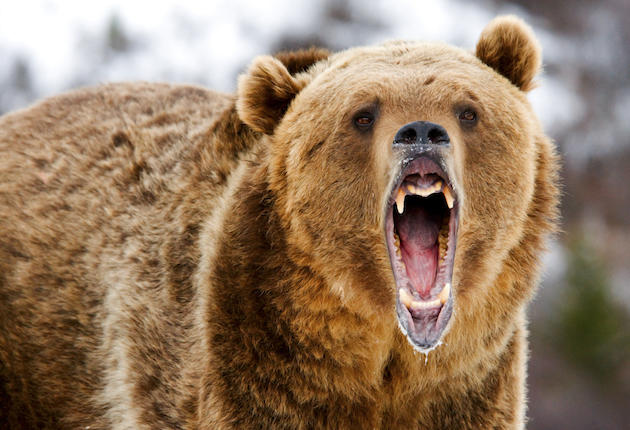Chase Dellwo was one yard away from a grizzly before either of them knew it. Winds were blowing up to 40 mph; snow and rain were falling; Dellwo was quietly bowhunting for elk. It could have been a worse situation, but not by much.
The Great Falls Tribune reported Dellwo, 26, was hunting near Choteau, Montana, Saturday with his brother Shane, 30, when the encounter happened. The bear was sleeping through the rough weather when Chase moved up a creek bed to push elk toward Shane. When the bear realized Dellwo was nearby it sprang from its bedding area and attacked the hunter, biting him on the head.
“He let go, but he was still on top of me roaring the loudest roar I have ever heard,” Dellwo told The Great Falls Tribune.
The bear left briefly, allowing Dellwo just enough time to sit up before it returned. It then bit Dellwo’s leg and threw him into the air. Somehow the hunter was able to recall a piece of random wisdom from his grandmother—how large animals have bad gag reflexes. With no time to waste, Dellwo shoved his right arm down the bear’s throat.
The trick worked and the bear left for good. Dellwo hiked back to his brother and was able to reach a hospital. In all, Chase received a swollen eye, bloodied head, and punctured leg from the attack—requiring hundreds of staples and stitches in total.
Dellwo made a point of saying the attack was not the bear’s fault and that it occurred purely from fear and surprise on the animal’s part.
The gag reflex, officially known as the pharyngeal reflex, is a reaction to touching areas on the roof of the mouth, around the tonsils, the back of the tongue, and the back of the throat. Chase’s gamble paid off; however, it could have made matters worse. Similar to the pharyngeal reflex is the pharyngeal swallow. The reflex, at least in humans, causes the body to swallow when the trigger areas are stimulated in order to force obstructions down into the stomach, clearing the upper respiratory tract from blockages.
Cover Image: Thinkstock

